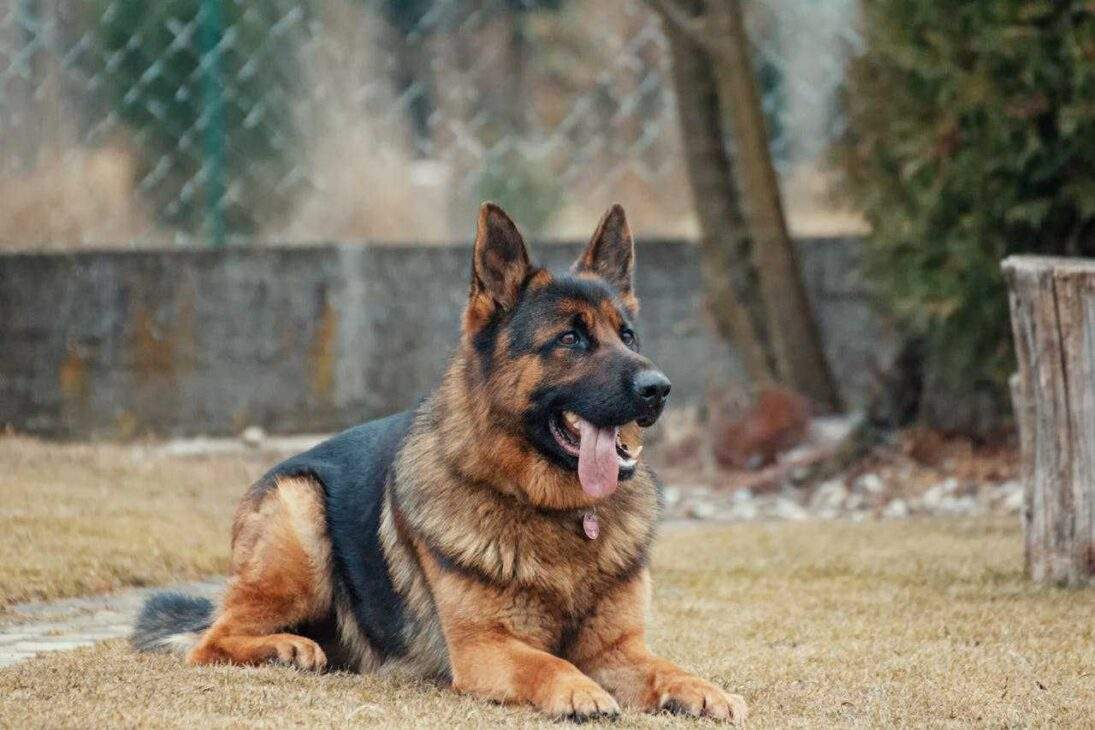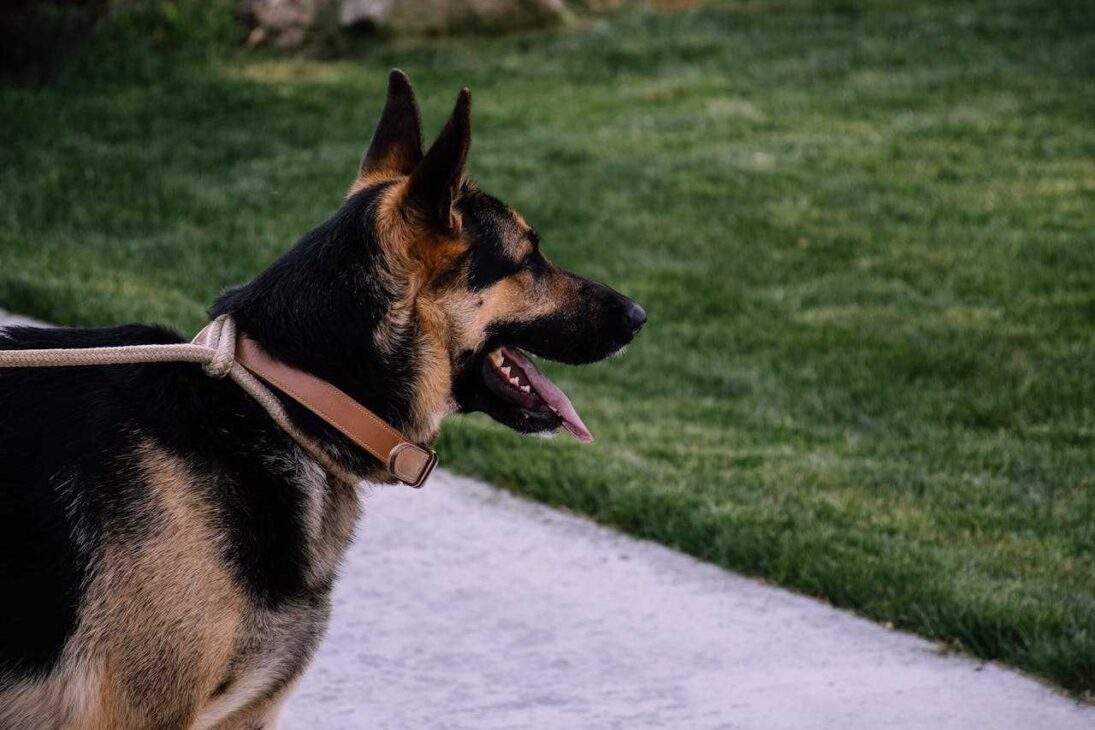German Shepherd Hip Dysplasia: 5 Warning Signs Every Shepherd Owner Needs to Know

German Shepherd hip dysplasia is a significant concern for many dog owners and breeders. This condition can greatly affect a dog’s quality of life, leading to pain, mobility issues, and even arthritis. Understanding hip dysplasia, its causes, symptoms, and treatments, is crucial for anyone who owns or is considering owning a German Shepherd. This comprehensive guide will delve into all aspects of hip dysplasia in German Shepherds, providing valuable information and resources to help you manage and prevent this condition.
Ah, the majestic German Shepherd. Known for their intelligence, loyalty, and athleticism, these regal canines are a beloved breed for many families. But just like any dog, German Shepherds can be susceptible to certain health conditions, and one of the most common concerns is hip dysplasia.
If you’re a proud owner of a German Shepherd, or you’re considering welcoming one into your life, understanding hip dysplasia is crucial. This condition can cause significant pain and mobility issues for your furry friend. But fear not! Here, we’ll delve into everything you need to know about hip dysplasia in German Shepherds.
We’ll explore the signs and symptoms to watch out for, delve into treatment options, and even share some helpful tips on how to prevent this condition from affecting your beloved pup. Whether you’re facing a recent diagnosis or simply want to be proactive about your dog’s health, this guide is here to empower you with knowledge. So, grab a comfy spot on the couch with your furry companion by your side, and let’s embark on this journey together!
What is Hip Dysplasia?
Hip dysplasia is a genetic disorder that affects the hip joints of dogs, especially large breeds like German Shepherds. It occurs when the ball and socket of the hip joint do not fit together properly, causing the joint to become loose and unstable. Over time, this misalignment leads to wear and tear, inflammation, and eventually, arthritis. The condition can be painful and debilitating, but with proper management, dogs can live comfortable and active lives.
Helpful Resources:
Causes of Hip Dysplasia in German Shepherds
The primary cause of hip dysplasia in German Shepherds is genetics. Dogs with parents or grandparents that had hip dysplasia are more likely to develop the condition. However, environmental factors also play a significant role. These factors include rapid growth during puppyhood, obesity, excessive exercise, or inadequate nutrition.
- Genetics: The hereditary nature of hip dysplasia means that selective breeding practices are essential. Responsible breeders screen their dogs for hip dysplasia and only breed those with healthy hips.
- Nutrition: Proper nutrition is crucial for growing puppies. Overfeeding can lead to rapid weight gain, which puts extra stress on developing joints.
- Exercise: Excessive or inappropriate exercise, especially in young dogs, can exacerbate the risk of developing hip dysplasia. Activities that involve a lot of jumping or running on hard surfaces should be avoided.
Helpful Resources:

Symptoms of Hip Dysplasia in German Shepherds
Recognizing the symptoms of hip dysplasia early can lead to more effective management and treatment. Common symptoms include:
- Limping or Lameness: Dogs may limp or show lameness in one or both hind legs.
- Difficulty Rising: Dogs with hip dysplasia often have trouble rising from a lying position.
- Reluctance to Exercise: Affected dogs may be reluctant to run, jump, or climb stairs.
- Pain in the Hip Area: Dogs may show discomfort when their hips are touched.
- Decreased Range of Motion: Affected dogs may have a reduced range of motion in their hips.
- Behavioral Changes: Dogs in pain may become irritable or less active.
Helpful Resources:
- VCA Hospitals: Hip Dysplasia in Dogs
- Canna-Pet: Hip Dysplasia Symptoms
Diagnosing Hip Dysplasia in German Shepherds
Diagnosis of hip dysplasia typically involves a combination of physical examinations and diagnostic imaging. Veterinarians will look for signs of pain, reduced range of motion, and other physical symptoms. X-rays are the most definitive way to diagnose hip dysplasia, as they can reveal the degree of joint laxity and the presence of arthritis.
- Physical Examination: During a physical exam, the veterinarian will manipulate the dog’s hips to check for pain, laxity, and range of motion.
- X-rays: Radiographs taken under sedation provide a clear picture of the hip joint’s structure and can show the severity of hip dysplasia and any arthritic changes.
Helpful Resources:
- American Animal Hospital Association: Hip Dysplasia
- Pet Health Network: Diagnosing Hip Dysplasia
Stages of Hip Dysplasia
Hip dysplasia progresses through several stages, from mild joint laxity to severe arthritis and loss of function. Understanding these stages can help in managing the condition effectively:
- Stage 1: Mild subluxation without arthritis. Dogs may not show significant symptoms but may have mild joint laxity.
- Stage 2: Moderate subluxation with early signs of arthritis. Symptoms such as limping and pain may become more apparent.
- Stage 3: Severe subluxation with significant arthritic changes. Dogs may have noticeable difficulty moving and significant pain.
- Stage 4: Advanced arthritis and significant joint damage. At this stage, the dog’s mobility is severely affected, and they may require more intensive treatment or surgery.
Helpful Resources:
- PetMD: Hip Dysplasia Stages
- VetInfo: Canine Hip Dysplasia Stages

Treatment Options for German Shepherd Hip Dysplasia
There are various treatment options for managing hip dysplasia in German Shepherds, ranging from non-surgical approaches to surgical interventions. The choice of treatment depends on the severity of the condition, the dog’s age, and overall health.
Non-Surgical Treatments
- Medications: Anti-inflammatory medications and pain relievers can help manage pain and inflammation. Non-steroidal anti-inflammatory drugs (NSAIDs) are commonly prescribed, but long-term use should be monitored by a vet.
- Weight Management: Keeping your German Shepherd at a healthy weight reduces stress on the hip joints. A balanced diet and controlled feeding can prevent obesity, which exacerbates hip dysplasia symptoms.
- Exercise: Controlled, low-impact exercises such as swimming or walking on soft surfaces can strengthen muscles without overstraining the joints. Avoid high-impact activities that can worsen the condition.
- Supplements: Glucosamine and chondroitin supplements can promote joint health and alleviate symptoms. Omega-3 fatty acids can also reduce inflammation and support joint function.
- Physical Therapy: Physical therapy can improve joint function and reduce pain. Techniques like massage, stretching, and specific exercises can enhance mobility and muscle strength.
Helpful Resources:
- ASPCA: Canine Hip Dysplasia Treatment
- American College of Veterinary Surgeons: Hip Dysplasia
Surgical Treatments
- Femoral Head Ostectomy (FHO): This procedure involves removing the head of the femur to eliminate the pain caused by the deformed joint. It’s typically recommended for smaller dogs or in cases where other treatments have failed.
- Triple Pelvic Osteotomy (TPO): TPO is performed on young dogs with minimal arthritis to improve the function of the hip joint. It involves cutting and rotating the pelvic bones to enhance the fit of the ball and socket.
- Total Hip Replacement (THR): THR is the most effective surgical treatment, replacing the damaged joint with an artificial one. It’s considered for dogs with severe hip dysplasia that do not respond to other treatments.
Helpful Resources:
- VCA Hospitals: Canine Hip Dysplasia Surgery
- PetMD: Hip Dysplasia Surgery
5 Warning Signs
Hip dysplasia is a common and concerning issue for German Shepherd owners. Understanding the warning signs can make a significant difference in your dog’s quality of life. Early detection allows for better management and treatment, preventing severe pain and mobility issues. Here are five crucial warning signs of hip dysplasia that every German Shepherd owner should be aware of.
1. Limping or Lameness
One of the earliest and most noticeable signs of hip dysplasia in German Shepherds is limping or lameness in the hind legs. You might observe your dog favoring one leg over the other or having an uneven gait.
What to Look For:
- Limping, especially after exercise or activity
- Favoring one leg, often shifting weight to the front legs
- Difficulty standing up or lying down
Action Steps:
If you notice your German Shepherd limping or showing signs of lameness, schedule a veterinary appointment as soon as possible. Early intervention can prevent further joint damage and pain.
Helpful Resources:
- American Kennel Club: Limping in Dogs
- PetMD: Lameness in Dogs
2. Difficulty Rising or Lying Down
Hip dysplasia can make simple movements like rising from a lying position or lying down challenging for your German Shepherd. This is due to the pain and discomfort caused by the misaligned hip joint.
What to Look For:
- Struggling to stand up after resting
- Taking longer to lie down
- Signs of discomfort or hesitation when changing positions
Action Steps:
Observe your dog’s daily movements and note any difficulties. Providing a supportive, orthopedic bed can help alleviate some discomfort. Consult your veterinarian for a thorough examination and possible treatments.
Helpful Resources:

3. Reluctance to Exercise
A German Shepherd with hip dysplasia may show a reluctance to participate in activities they once enjoyed, such as running, jumping, or climbing stairs. This behavior change is often due to the pain and stiffness associated with the condition.
What to Look For:
- Avoiding stairs or jumping onto furniture
- Less enthusiasm for walks or playtime
- Reduced activity levels overall
Action Steps:
Monitor your dog’s activity levels and look for changes in their willingness to exercise. Consult with your vet to develop an appropriate exercise plan that minimizes discomfort while maintaining muscle strength.
Helpful Resources:
- Pet Health Network: Hip Dysplasia in Dogs
- Ortho Dog: Canine Hip Dysplasia
4. Hip Pain or Sensitivity
Dogs with hip dysplasia often exhibit signs of pain or sensitivity around their hip area. They may show discomfort when touched or manipulated in the hip region.
What to Look For:
- Whining, yelping, or growling when hips are touched
- Licking or chewing at the hip area
- Signs of pain when getting up, lying down, or during movement
Action Steps:
Gently feel your dog’s hip area to check for signs of discomfort or pain. If your dog reacts negatively, seek veterinary advice for a comprehensive evaluation and pain management strategies.
Helpful Resources:
- ASPCA: Canine Hip Dysplasia Treatment
- American College of Veterinary Surgeons: Hip Dysplasia
5. Decreased Range of Motion
A decreased range of motion in the hips is a common symptom of hip dysplasia. Your dog might struggle to extend or flex their hips fully, which can affect their gait and overall mobility.
What to Look For:
- Stiffness in the hind legs
- Shortened stride while walking
- Difficulty performing actions that require hip flexibility, such as climbing stairs
Action Steps:
Observe your dog’s movements and note any changes in their stride or flexibility. Physical therapy and appropriate exercises can help maintain range of motion and alleviate stiffness.
Helpful Resources:
Recognizing these warning signs of hip dysplasia in your German Shepherd can lead to early intervention and better management of the condition. Regular veterinary check-ups, a balanced diet, appropriate exercise, and proactive treatments can significantly improve your dog’s quality of life. Stay vigilant and consult your veterinarian if you notice any of these symptoms in your German Shepherd.
Additional Resources:
- American Kennel Club: Health
- PetMD: German Shepherd Health Issues
- Whole Dog Journal: Joint Supplements for Dogs
Managing Hip Dysplasia in German Shepherds
Living with a Dog with Hip Dysplasia
Living with a German Shepherd that has hip dysplasia requires a compassionate and proactive approach. Providing a comfortable living environment, regular veterinary check-ups, and a balanced diet are essential for managing the condition. Dogs may need assistance with mobility, and supportive devices like ramps and orthopedic beds can be beneficial.
- Comfortable Living Environment: Ensure your dog has a soft, supportive bed to sleep on. Ramps can help them navigate stairs or get into the car without jumping.
- Regular Veterinary Check-ups: Regular visits to the vet are crucial to monitor the progression of hip dysplasia and adjust treatment plans as needed.
- Balanced Diet: Feeding a diet that supports joint health can help manage symptoms. Look for foods with high levels of Omega-3 fatty acids, glucosamine, and chondroitin.
Helpful Resources:
- PetMD: Living with a Dog with Hip Dysplasia
- Canna-Pet: Managing Hip Dysplasia

Physical Therapy and Exercise
- Physical Therapy: Professional physical therapy can significantly improve a dog’s mobility and reduce pain. Techniques include massage, heat therapy, and specialized exercises.
- Hydrotherapy: Swimming and underwater treadmill exercises provide low-impact workouts that strengthen muscles without stressing the joints.
- Home Exercises: Gentle stretching and range-of-motion exercises can be done at home to maintain joint flexibility and muscle strength.
Helpful Resources:
- American Kennel Club: Physical Therapy for Dogs
- PetMD: Hydrotherapy for Dogs
Supplements for German Shepherds Hip Dysplasia
Supplements can play a significant role in managing hip dysplasia. Glucosamine, chondroitin, and Omega-3 fatty acids are commonly recommended to support joint health and reduce inflammation.
- Glucosamine and Chondroitin: These supplements help repair cartilage and improve joint function.
- Omega-3 Fatty Acids: Found in fish oil, these acids reduce inflammation and promote joint health.
- Turmeric: This natural anti-inflammatory can help reduce pain and inflammation associated with hip dysplasia.
Helpful Resources:
Preventing Hip Dysplasia in German Shepherds
Prevention is always better than cure. While genetic predisposition plays a major role in hip dysplasia, there are several steps owners can take to reduce the risk:
- Responsible Breeding: Only breed dogs that have been screened for hip dysplasia and have healthy hip scores.
- Balanced Diet: Ensure puppies receive a balanced diet that promotes slow and steady growth. Avoid overfeeding and excessive caloric intake.
- Controlled Exercise: Avoid strenuous exercise in young puppies. Focus on low-impact activities like swimming and controlled play.
Helpful Resources:
- Orthopedic Foundation for Animals: Preventing Hip Dysplasia
- Pet Health Network: Hip Dysplasia Prevention
Best Dog Food for German Shepherds with Hip Dysplasia
Feeding a diet that supports joint health is crucial for managing hip dysplasia symptoms. Look for foods with high levels of Omega-3 fatty acids, glucosamine, and chondroitin. Specialized joint care formulas can also be beneficial.
- High-Quality Protein: Ensure your dog’s food contains high-quality protein sources to support muscle health.
- Omega-3 Fatty Acids: Foods rich in Omega-3s, such as fish oil, can reduce inflammation and support joint health.
- Glucosamine and Chondroitin: These supplements help maintain joint cartilage and reduce symptoms of hip dysplasia.
Helpful Resources:
- The Dog Food Advisor: Best Dog Foods for Hip Dysplasia
- AKC: Nutrition for Dogs with Hip Dysplasia

German Shepherd Hip Dysplasia
German Shepherd hip dysplasia is a manageable condition with the right approach. From early detection to effective treatment and long-term management, you can ensure your dog lives a happy and active life. Understanding the causes, symptoms, and treatment options allows you to make informed decisions and provide the best care for your furry friend.
Phew! We’ve covered a lot of ground when it comes to hip dysplasia in German Shepherds. Remember, early detection and intervention are key to managing this condition and ensuring your furry friend enjoys a long, happy, and active life. By familiarizing yourself with the signs and symptoms, exploring treatment options with your veterinarian, and implementing preventative measures like proper exercise and diet, you can significantly improve your dog’s quality of life.
Of course, every dog is an individual, and if you have any concerns about your German Shepherd’s health or suspect hip dysplasia, always consult your veterinarian. They can provide a personalized diagnosis and treatment plan specific to your dog’s needs.
So, armed with this knowledge, go forth and shower your German Shepherd with love, healthy meals, and fun activities that promote healthy joint development. Together, you can create a happy and active life for your loyal canine companion!
Helpful Resources:
- American Kennel Club: Health
- PetMD: German Shepherd Health Issues
By staying informed and proactive, you can help your German Shepherd thrive despite hip dysplasia. Regular veterinary care, a balanced diet, appropriate exercise, and a loving environment are key to managing this condition effectively.
Frequently Asked Questions
1. What are the signs of hip dysplasia in German Shepherds?
Look out for symptoms like limping, difficulty getting up or down, stiffness, bunny hopping gait (hopping on both hind legs), reluctance to climb stairs or jump, and yelping when touched around the hip area.
2. At what age do German Shepherds typically show signs of hip dysplasia?
Symptoms can appear as early as 4-6 months, but often become more noticeable between 1-2 years old.
3. How is hip dysplasia diagnosed in German Shepherds?
Veterinarians typically diagnose hip dysplasia through a physical examination, X-rays, and sometimes additional tests like CT scans.
4. What are the treatment options for hip dysplasia in German Shepherds?
Treatment options depend on the severity of the condition. It can involve weight management, pain medication, physical therapy, joint supplements, and in severe cases, surgery.
5. Is there surgery for hip dysplasia in German Shepherds?
Yes, there are different surgical procedures available to improve hip joint stability and function. Consult your veterinarian to determine the best option for your dog.
6. What can I do to prevent hip dysplasia in my German Shepherd puppy?
Maintaining a healthy weight, providing controlled exercise to promote proper muscle development, and avoiding activities that put excessive strain on joints can all help reduce the risk.
7. Is there a special diet for German Shepherds with hip dysplasia?
While there’s no single “hip dysplasia diet,” a veterinarian might recommend a diet formulated for large breeds with joint support ingredients like glucosamine and chondroitin.
8. What kind of exercise is good for a German Shepherd with hip dysplasia?
Low-impact activities like swimming, controlled leash walks on soft surfaces, and gentle stretching can help maintain mobility without aggravating the condition.
9. Is hip dysplasia in German Shepherds hereditary?
Yes, genetics play a role, so responsible breeders screen their breeding stock for hip dysplasia.
10. What is the lifespan of a German Shepherd with hip dysplasia?
With proper management, German Shepherds with hip dysplasia can still live long and happy lives. Early diagnosis and intervention are key factors in ensuring their well-being.







